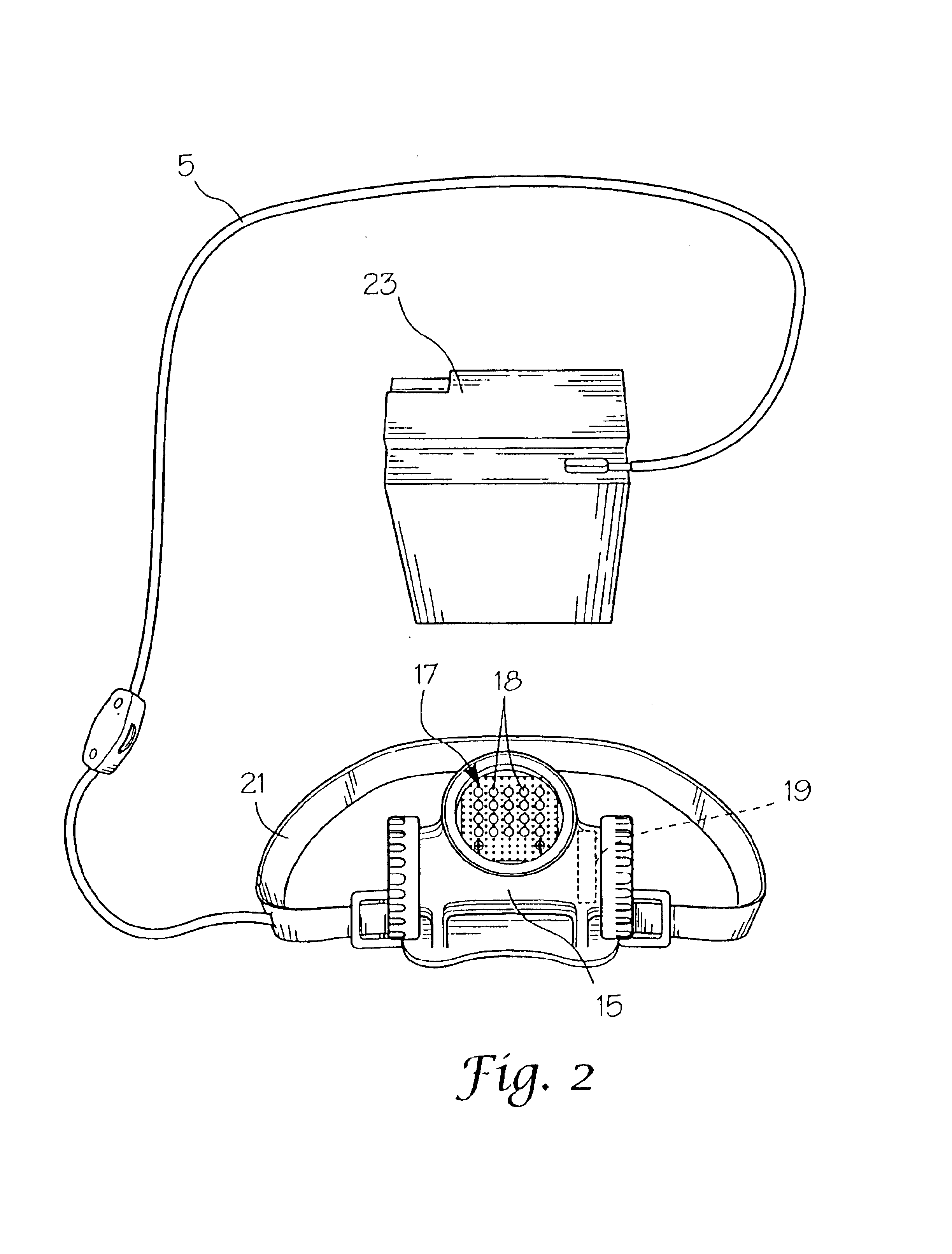LED intense headband light source for fingerprint analysis
a fingerprint analysis and headband technology, applied in the direction of lighting support devices, instruments, lighting and heating apparatus, etc., can solve the problems of limiting the free range of movement of users, cumbersome and heavy, and costing approximately $10,000
- Summary
- Abstract
- Description
- Claims
- Application Information
AI Technical Summary
Benefits of technology
Problems solved by technology
Method used
Image
Examples
embodiment 20
An array of LEDs increases the intensity of the light source. In a preferred embodiment 20 LEDs are used. In an alternate preferred embodiment for commercial use, the system has between about 40 and 60 LEDs. In another alternate preferred embodiment, it seems that the best compromise for light production to battery charge calls for an array of between about 60 to 80, 470 nm LEDs. It is noted however, that an array of LEDs numbering from about three to well over one-hundred may be used, preferably including arrays having from about 10 to about 100 LEDs.
The wavelength of the LED is chosen according to the dye used during the dusting of latent fingerprints. At least in several cases, the dye absorbs shorter wavelengths of light than that of the corresponding fluorescence. It should be noted that an array of LEDs which emit green wavelength light may be used.
In a preferred embodiment, and as seen in FIG. 1, the device of the present invention comprises a headset 1, a powersource belt po...
example 1
Using a 470 nanometer source of 6 LEDs, the spectra of white paper and rhodamine 6G dye on paper, illumination by these LEDs was recorded using a spectroradiometer obtainable from Analytical Systems Device, Incorporated. As seen, the LEDs emit light having a wavelength from between about 400 nm to about 550 nm. The LEDs radiated light onto white paper covered with rhodamine 6G dye. More specifically, the LED was shown onto a Spectralon target held at about one meter away from the light source. It scattered light in all directions (lambertian). The fiber optic of the spectroradiometer was directed to the illuminated portion of the Spectralon target. FIG. 5 plots the resulting reflective light radiance (W / m2-sr-nm) as measured by the above-mentioned spectroradiometer.
example 2
Using an array of six 430 nanometer emitting LED reflective illumination of white paper versus rhodamine 6G dye on the white paper was measured using a spectroradiometer obtainable from Analytical Systems Device, Incorporated. Reflective light radiating from the 430 nanometer LED's and then reflectively radiating off of white paper and the dye produced the three curves shown on FIG. 6. As seen, the LEDs emit light having a wavelength from between about 400 nm to about 550 nm. As also seen, the curve designated by squares show reflection of 430 nanometer illumination off of white paper not having dye attached thereto. The curve designated with plus signs illustrates reflection of 430 nanometer blue illumination and emmited fluorescence light produced by rhodamine 6G dye. The third curve designated by triangles is of the filtered reflected fluorescence from rhodamine 60 dye as viewed through an orange filtering lens. As seen in this third curve, light reflecting off of plain white pap...
PUM
 Login to View More
Login to View More Abstract
Description
Claims
Application Information
 Login to View More
Login to View More - R&D
- Intellectual Property
- Life Sciences
- Materials
- Tech Scout
- Unparalleled Data Quality
- Higher Quality Content
- 60% Fewer Hallucinations
Browse by: Latest US Patents, China's latest patents, Technical Efficacy Thesaurus, Application Domain, Technology Topic, Popular Technical Reports.
© 2025 PatSnap. All rights reserved.Legal|Privacy policy|Modern Slavery Act Transparency Statement|Sitemap|About US| Contact US: help@patsnap.com



